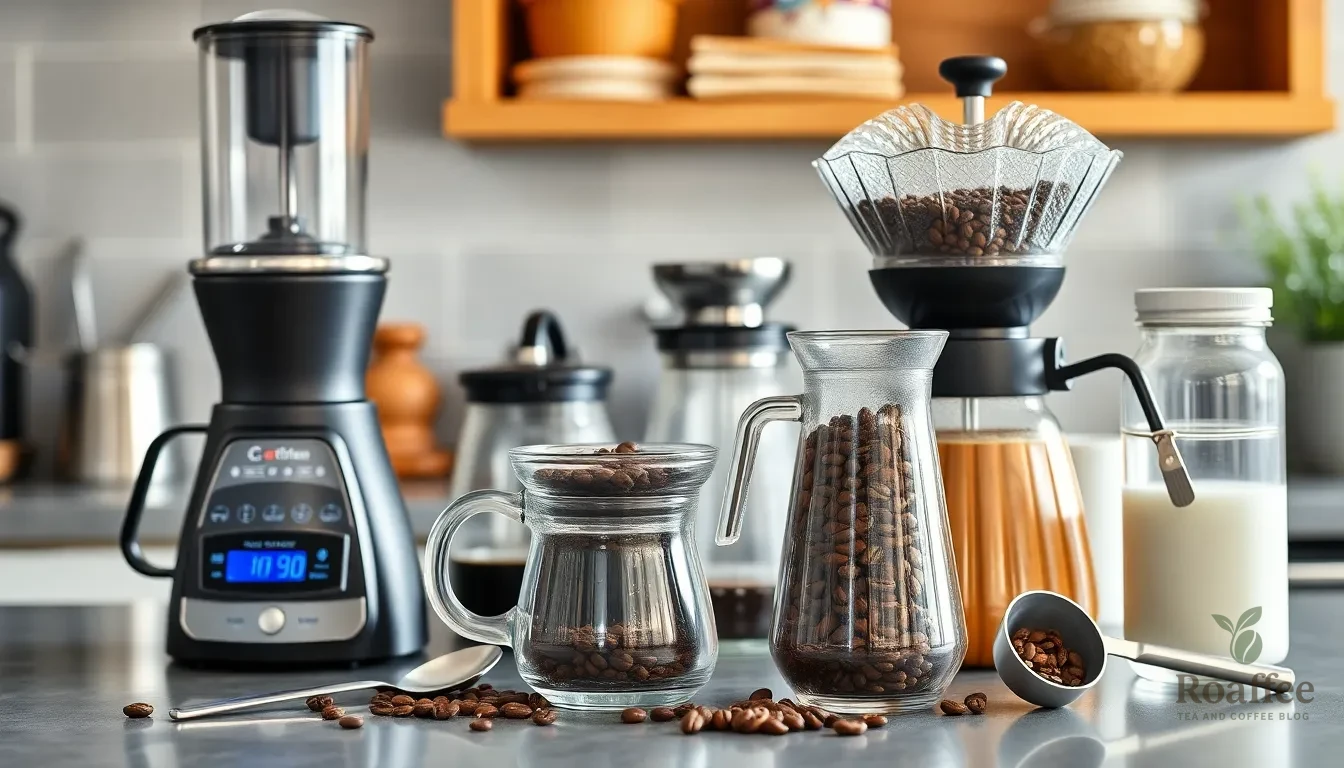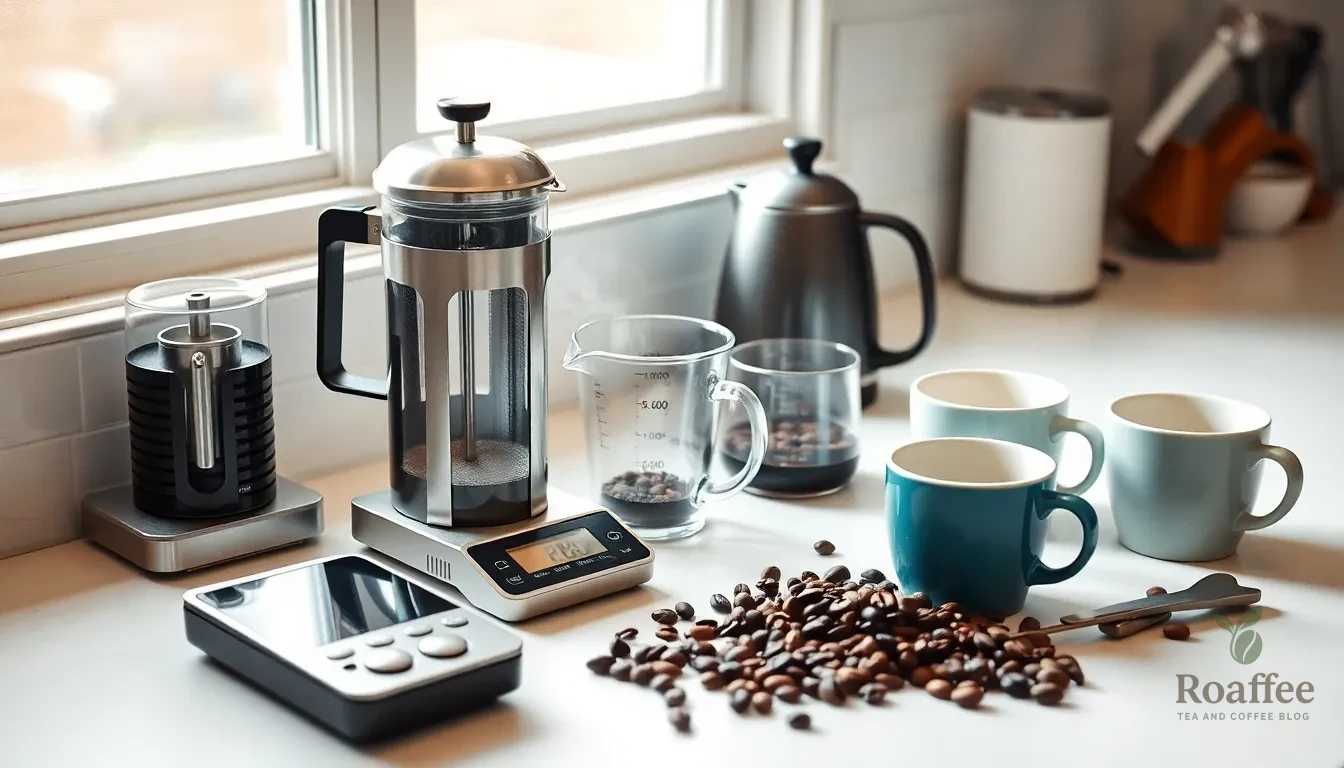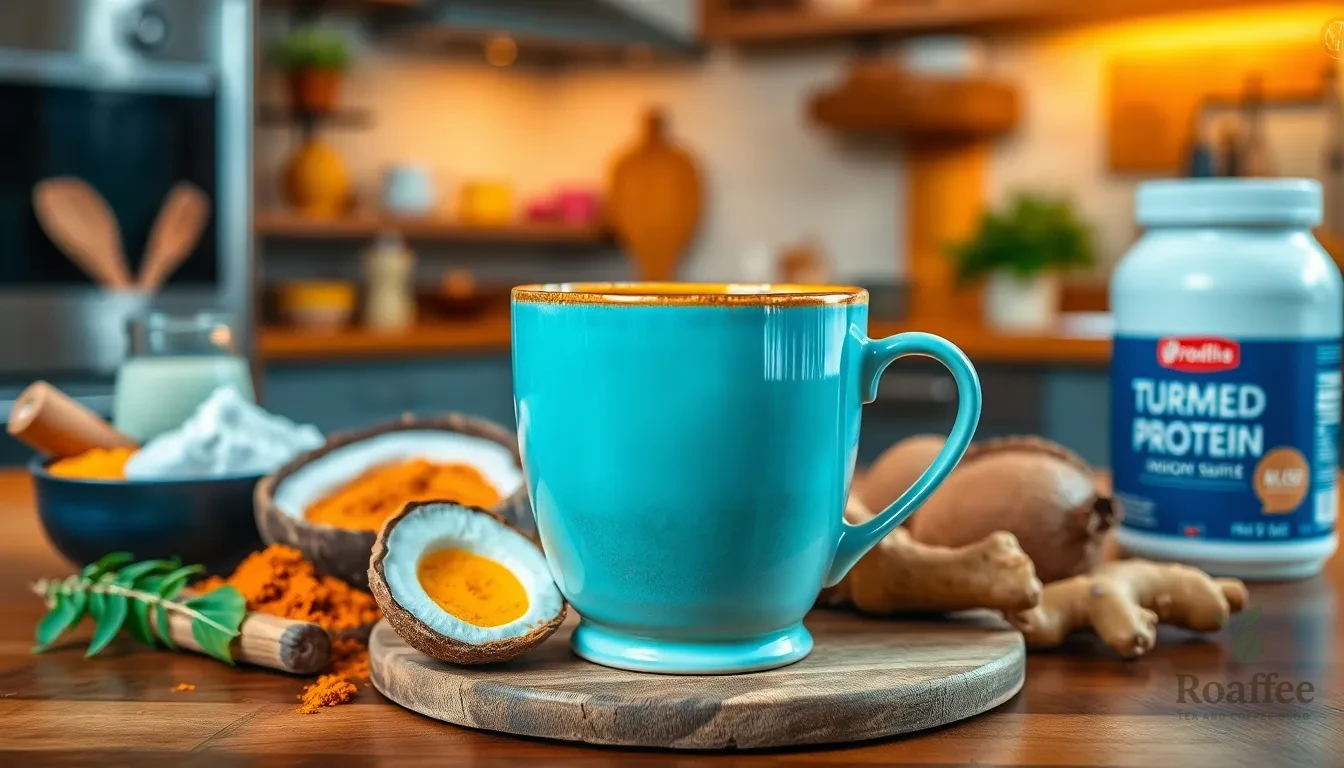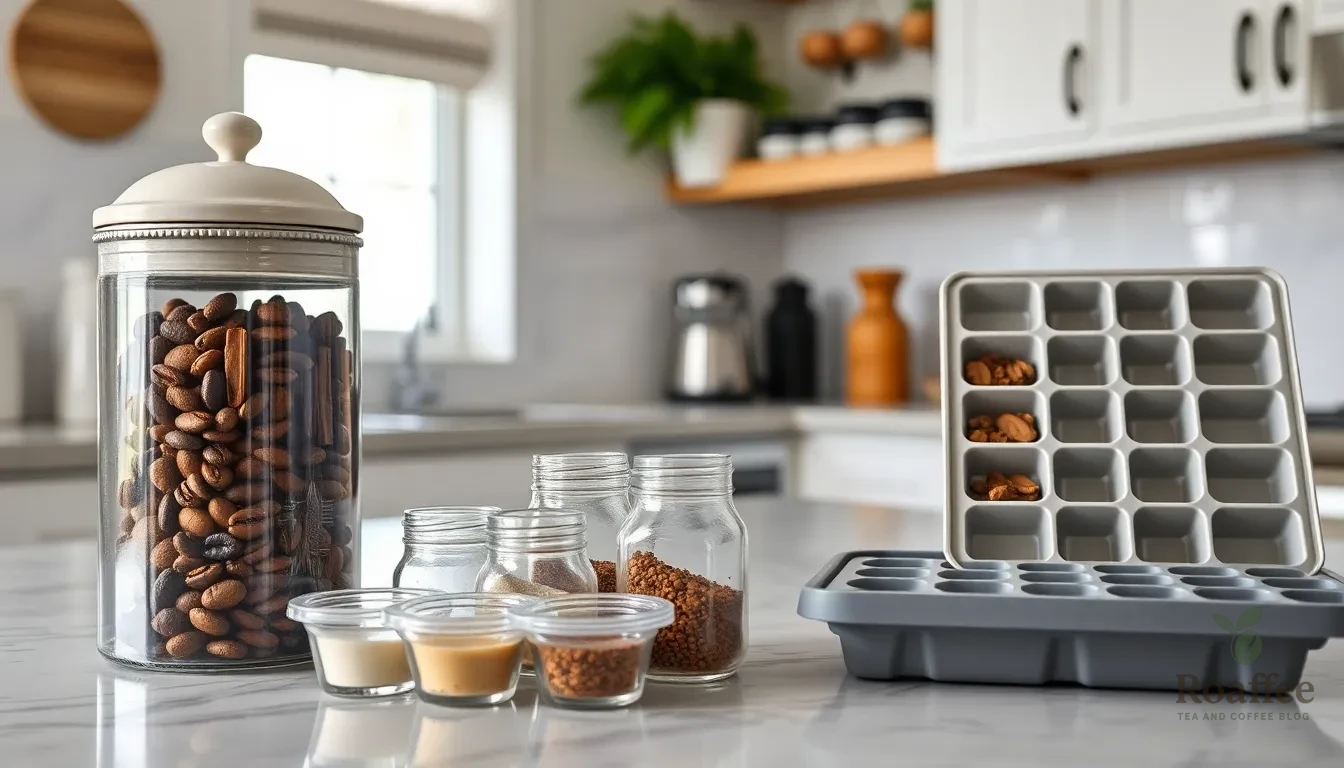We all love our morning coffee ritual but let’s be honest – most of us aren’t making the healthiest choices when it comes to our daily brew. Between sugar-loaded syrups flavored creamers and oversized portions we’re often turning our beloved morning pick-me-up into a calorie bomb that leaves us crashing before lunch.
The good news? We don’t have to sacrifice our coffee addiction for better health. Making healthy coffee is easier than you might think and it doesn’t mean settling for boring black coffee every day. With a few simple swaps and smart ingredient choices we can transform our morning cup into a nutritious powerhouse that actually supports our wellness goals.
From choosing the right beans to adding metabolism-boosting spices we’ll show you how to create delicious healthy coffee drinks that taste amazing and make you feel even better. Your taste buds and your body will thank you for these simple yet powerful changes.
What Makes Coffee Healthy
Coffee becomes healthy when we focus on maximizing its natural benefits while minimizing harmful additives. The foundation of healthy coffee starts with the bean itself.
Antioxidant Power
Coffee naturally contains powerful antioxidants called chlorogenic acids. These compounds help fight inflammation and protect our cells from damage. We get the highest concentration of these beneficial compounds from freshly roasted beans.
Metabolism Enhancement
Caffeine naturally boosts our metabolic rate by 3-11%. This increase helps our bodies burn calories more efficiently throughout the day. Pure coffee without added sugars or fats maintains this metabolic advantage.
Mental Performance Benefits
Coffee improves cognitive function by blocking adenosine receptors in our brain. This process enhances focus alertness and memory formation. We experience these benefits most effectively when we consume coffee without sugar crashes from added sweeteners.
Nutrient Profile
Quality coffee provides essential nutrients including riboflavin magnesium and potassium. These minerals support various bodily functions from energy production to muscle function. We preserve these nutrients by avoiding excessive processing and artificial additives.
Timing Considerations
Healthy coffee consumption depends on when we drink it. Morning consumption aligns with our natural cortisol rhythms. We avoid late afternoon coffee to prevent sleep disruption which impacts overall health.
Preparation Methods
The brewing method significantly impacts coffee’s health profile. Cold brew and pour over methods extract fewer bitter compounds while preserving beneficial oils. We maintain optimal health benefits by using filtered water and avoiding paper filters that trap healthy oils.
Portion Control
Moderate consumption of 1-4 cups per day provides health benefits without negative effects. We balance our intake based on individual caffeine sensitivity and overall health goals.
Essential Equipment and Tools

Creating healthy coffee at home requires the right equipment to preserve those beneficial compounds and natural flavors. We’ll explore the must-have tools that help you brew nutritious coffee while maintaining control over every ingredient.
Coffee Brewing Equipment
Coffee Grinder: A quality burr grinder preserves the antioxidants and essential oils in your coffee beans. We recommend burr grinders over blade grinders because they create uniform particle sizes that extract flavors evenly. Fresh grinding releases maximum antioxidant potential from your beans.
Coffee Maker Options: Several brewing methods support healthy coffee preparation. Pour-over systems like V60 or Chemex give you complete control over water temperature and brewing time. French press brewing extracts beneficial oils that paper filters remove. Espresso machines work well for concentrated shots without added sugars.
Water Filtration System: Clean filtered water enhances coffee flavor while removing chlorine and impurities that interfere with antioxidant absorption. We suggest using filtered water to maximize the health benefits of your coffee beans.
Measuring Tools
Digital Kitchen Scale: Precision matters when brewing healthy coffee. A digital scale ensures consistent coffee-to-water ratios that extract optimal flavor and nutrients. We measure both coffee beans and water by weight for repeatable results.
Measuring Spoons and Cups: Standard measuring tools help you control portions of healthy additions like spices and natural sweeteners. Accurate measurements prevent overloading your coffee with unnecessary calories.
Coffee Ratio Chart: Keep a reference guide for different brewing methods. Most healthy coffee recipes use a 1:15 to 1:17 coffee-to-water ratio by weight.
Optional Accessories
Milk Frother: Create creamy textures using plant-based milk alternatives without added sugars. Handheld frothers work well for almond milk and oat milk preparations.
Spice Grinder: Freshly ground cinnamon nutmeg and cardamom provide metabolism-boosting benefits. A dedicated spice grinder prevents flavor cross-contamination with your coffee beans.
Glass Storage Containers: Airtight glass jars preserve coffee bean freshness and prevent oxidation that destroys healthy compounds. We store beans in cool dark places using opaque containers.
Temperature Thermometer: Water temperature affects extraction and nutrient preservation. Optimal brewing occurs between 195-205°F for maximum antioxidant extraction without bitter compounds.
Healthy Coffee Ingredients

Creating nutritious coffee starts with selecting the right foundational ingredients that enhance both flavor and health benefits. We’ll explore essential components that transform your daily brew into a wellness-supporting beverage.
Base Coffee Selection
Organic Dark Roast Beans
- 2 tablespoons whole beans per 8 oz water
- Single-origin varieties from Ethiopia or Guatemala
- Roasted within 2-4 weeks of purchase date
Medium Roast Alternatives
- Colombian or Brazilian beans
- Lower acidity for sensitive stomachs
- Higher antioxidant retention than light roasts
Decaf Options
- Swiss water processed beans
- Retains 97% of antioxidants
- Ideal for evening consumption
Natural Sweeteners
Raw Honey
- 1 teaspoon per 8 oz serving
- Contains enzymes and minerals
- Manuka honey offers additional antibacterial properties
Pure Maple Syrup
- 1-2 teaspoons grade A dark robust
- Rich in manganese and zinc
- Lower glycemic index than refined sugar
Stevia Extract
- 2-3 drops liquid stevia
- Zero calories and carbohydrates
- Choose organic varieties without additives
Coconut Sugar
- 1 teaspoon per serving
- Contains inulin fiber
- Slower blood sugar impact
Healthy Add-ins and Enhancers
Spices and Flavor Boosters
- 1/4 teaspoon ground cinnamon for blood sugar regulation
- 1/8 teaspoon turmeric with pinch of black pepper
- 1/4 teaspoon vanilla extract (alcohol-free)
- Pinch of sea salt to enhance flavors
Healthy Fats
- 1 tablespoon coconut oil or MCT oil
- 1 tablespoon grass-fed butter for bulletproof coffee
- 2 tablespoons unsweetened almond milk
- 1 tablespoon heavy cream from grass-fed sources
Protein Additions
- 1 scoop unflavored collagen peptides
- 2 tablespoons unsweetened protein powder
- 1 tablespoon almond butter for creamy texture
- 1 teaspoon cacao powder for antioxidants
- 1/2 teaspoon maca powder for energy
- 1/4 teaspoon ashwagandha for stress support
- 1 tablespoon unsweetened cocoa powder
Preparation Steps

Now that we have our equipment ready and ingredients selected, let’s walk through the essential preparation steps for creating the perfect healthy coffee. These foundational steps ensure we extract maximum flavor and health benefits from our coffee beans.
Prep Your Equipment
We begin by cleaning all our equipment to eliminate any residual oils or flavors from previous brews. Rinse the coffee maker, French press, or pour-over dripper with warm water to remove any dust or particles. Check that our burr grinder blades are clean and free from old coffee residue.
Fill the water reservoir with fresh filtered water, ensuring we use the proper ratio for our brewing method. Heat the water to the optimal temperature range of 195-205°F for most brewing methods. We avoid boiling water as it can extract bitter compounds and reduce the beneficial antioxidants in our coffee.
Set up our workspace with measuring tools, stirring spoons, and any additional ingredients within easy reach. This preparation streamlines the brewing process and helps maintain consistent results. We also warm our coffee cups or mugs with hot water to prevent temperature shock when pouring our freshly brewed coffee.
Measure Your Ingredients
We start with the golden ratio of 1:15 to 1:17 coffee to water for optimal extraction and flavor balance. This translates to approximately 2 tablespoons of ground coffee for every 6 ounces of water. We adjust these measurements based on our taste preferences and brewing method requirements.
Measure our coffee beans using a digital scale for precision rather than relying on volume measurements. We typically use 20-25 grams of coffee beans for a single serving cup. Weigh our natural sweeteners like honey or maple syrup in small amounts, starting with 1 teaspoon and adjusting to taste.
Pour our filtered water into measuring cups, noting that different brewing methods require exact water amounts. For spices like cinnamon or cardamom, we measure small quantities of 1/4 teaspoon or less to avoid overpowering the coffee’s natural flavors. We prepare any healthy fats like coconut oil or grass-fed butter in measured portions of 1-2 teaspoons per cup.
Instructions for Basic Healthy Coffee

We’ll walk you through creating a nutritious coffee that maximizes health benefits while delivering exceptional taste. These step-by-step instructions transform your regular coffee routine into a wellness-focused experience.
Brewing the Perfect Base
Start brewing by heating your filtered water to 195-205°F for optimal extraction. Pour a small amount over your coffee grounds and let them bloom for 30 seconds to release trapped gases. This blooming process enhances flavor extraction and creates a more balanced cup.
Continue pouring the remaining water in a slow circular motion from the center outward. Maintain steady pressure throughout the brewing process to ensure even saturation. The total brewing time should range from 4-6 minutes depending on your chosen method.
French press users should steep grounds for exactly 4 minutes before pressing down the plunger slowly. Pour-over enthusiasts should aim for a total brew time of 2-3 minutes with consistent water flow. Espresso machines require 25-30 seconds for proper extraction with medium pressure.
Adding Healthy Ingredients
Incorporate your chosen natural sweetener while the coffee remains hot for better dissolution. Start with half the recommended amount and adjust to taste preferences. Raw honey dissolves best when coffee temperature drops slightly below boiling point.
Add spices during the final 30 seconds of brewing for maximum flavor infusion. Cinnamon sticks work better than ground cinnamon for cleaner taste. Turmeric requires thorough stirring to prevent settling at the bottom of your cup.
Healthy fats like coconut oil or MCT oil should be added after brewing completes. Use a milk frother or blender to create proper emulsification. This step prevents oil separation and creates a creamy texture throughout your drink.
Final Mixing and Serving
Stir all ingredients thoroughly using a spoon or small whisk for 15-20 seconds. This ensures even distribution of flavors and prevents ingredient separation. Taste and adjust sweetness or spice levels as needed.
Pour your healthy coffee into a pre-warmed mug to maintain optimal temperature. Serve immediately for best flavor experience. The coffee should maintain its temperature for 10-15 minutes when properly prepared.
Store any remaining coffee in a thermal carafe rather than reheating later. Reheating destroys beneficial compounds and creates bitter flavors. Fresh preparation always yields superior health benefits and taste quality.
Healthy Coffee Variations

Now that we’ve covered the fundamentals of healthy coffee preparation, let’s explore exact variations that target different health goals. Each variation builds upon our foundation while adding unique nutritional benefits.
Bulletproof Coffee Method
We create bulletproof coffee by blending high-quality coffee with healthy fats that provide sustained energy and mental clarity. This variation transforms your morning cup into a meal replacement that supports ketogenic lifestyles and cognitive function.
Start with 8 ounces of freshly brewed coffee using our previously outlined method. Add 1 tablespoon of grass-fed butter or ghee along with 1 tablespoon of MCT oil or coconut oil. Blend the mixture for 30 seconds using a high-speed blender or milk frother until it becomes creamy and frothy.
The healthy fats slow caffeine absorption and provide steady energy without crashes. We recommend consuming this variation in the morning as it contains approximately 230 calories and can replace breakfast for those following intermittent fasting protocols.
Golden Turmeric Coffee
We enhance coffee’s anti-inflammatory properties by incorporating turmeric and complementary spices that support joint health and reduce oxidative stress. This golden variation combines coffee’s antioxidants with turmeric’s powerful curcumin compound.
Brew 8 ounces of coffee using your preferred method. Mix 1/2 teaspoon of ground turmeric with 1/4 teaspoon of ground ginger and a pinch of black pepper in a small bowl. Add this spice mixture to your hot coffee along with 1 tablespoon of coconut milk and 1 teaspoon of raw honey.
Stir thoroughly and let the spices infuse for 2 minutes before drinking. The black pepper enhances curcumin absorption while the coconut milk provides healthy fats that support the absorption of fat-soluble compounds.
Protein-Packed Coffee
We boost coffee’s nutritional profile by adding protein powder that supports muscle recovery and provides lasting satiety. This variation works perfectly for post-workout consumption or as a breakfast replacement.
Prepare 8 ounces of coffee and allow it to cool slightly to prevent protein powder from clumping. Add 1 scoop of vanilla or unflavored protein powder along with 1 tablespoon of almond butter or cashew butter. Include 1/2 teaspoon of cinnamon for additional flavor and blood sugar regulation benefits.
Blend the mixture for 20-30 seconds until smooth and creamy. This variation provides approximately 25-30 grams of protein and creates a satisfying drink that supports muscle maintenance and metabolic health.
Antioxidant-Rich Coffee
We maximize coffee’s natural antioxidant content by adding superfoods that amplify its protective properties against cellular damage. This variation focuses on ingredients that support immune function and overall wellness.
Brew 8 ounces of coffee using organic dark roast beans for maximum antioxidant concentration. Add 1 teaspoon of raw cacao powder and 1/2 teaspoon of ground cinnamon to your coffee. Include 1 tablespoon of coconut cream and sweeten with 1 teaspoon of pure maple syrup.
Stir the mixture well and top with a sprinkle of unsweetened cocoa powder. The cacao provides flavonoids and magnesium while cinnamon adds chromium and additional antioxidants that work synergistically with coffee’s natural compounds.
Storage and Make-Ahead Tips

Proper storage and preparation methods ensure your healthy coffee maintains its nutritional benefits and exceptional flavor throughout the week. We’ve developed proven strategies to keep your coffee fresh while streamlining your morning routine.
Storing Coffee Beans
Fresh coffee beans lose their potency quickly when exposed to air, light, and moisture. We recommend storing whole beans in an airtight container made of ceramic, glass, or stainless steel to preserve their antioxidant content. Keep your container in a cool, dark pantry away from heat sources like stoves or direct sunlight.
Never store coffee beans in the refrigerator or freezer as temperature fluctuations create condensation that damages the beans’ cellular structure. Purchase coffee in small batches that you can consume within 2-3 weeks of the roast date for optimal freshness. Write the roast date on your storage container to track freshness effectively.
Ground coffee deteriorates much faster than whole beans, so we suggest grinding only what you need for each brewing session. If you must pre-grind coffee, store it in an airtight container and use within one week for the best flavor and health benefits.
Preparing Ingredients in Advance
Batch preparing your healthy coffee additions saves time during busy mornings while ensuring consistent flavor profiles. We recommend preparing spice blends like cinnamon, turmeric, and ginger combinations in small airtight containers that last up to three months.
Pre-measure individual portions of protein powder, collagen peptides, or other supplements into small containers or bags for grab-and-go convenience. This method prevents over-measuring and ensures you receive consistent nutritional benefits each morning.
Natural sweeteners like raw honey and pure maple syrup maintain their quality when stored in cool, dark locations. We suggest portioning these sweeteners into small squeeze bottles or containers for easy measuring. Coconut oil and MCT oil can be pre-portioned into ice cube trays and stored in the freezer for convenient single-serving additions.
Prepare cold brew concentrate in advance by steeping coarsely ground coffee in cold water for 12-24 hours. This concentrate stores well in the refrigerator for up to two weeks and provides a quick base for healthy iced coffee variations. Mix the concentrate with hot water or your preferred milk alternative when ready to serve.
Serving Suggestions

Our healthy coffee creations shine brightest when paired with the right accompaniments and served at optimal moments throughout the day. We recommend serving your nutritious coffee in pre-warmed ceramic or glass mugs to maintain temperature and enhance the drinking experience.
Morning servings work best alongside protein-rich breakfasts like Greek yogurt with berries or whole grain toast with avocado. The combination supports sustained energy levels and prevents caffeine jitters that often occur on an empty stomach.
For afternoon servings, we suggest pairing your healthy coffee with raw nuts or dark chocolate containing at least 70% cacao. These additions complement coffee’s antioxidant properties while providing healthy fats that slow caffeine absorption.
Our Bulletproof Coffee variation pairs excellently with intermittent fasting schedules, as the healthy fats provide satiety without breaking your fast. Serve this rich blend between 6-10 AM for optimal metabolic benefits.
Golden Turmeric Coffee works beautifully as an evening wind-down drink when prepared with decaf beans. The warming spices create a comforting ritual that supports healthy sleep patterns when enjoyed 2-3 hours before bedtime.
Protein-Packed Coffee serves as an ideal post-workout recovery drink when consumed within 30 minutes of exercise. We recommend adding a pinch of sea salt to enhance electrolyte balance and improve muscle recovery.
For social gatherings, present your healthy coffee creations in a coffee bar setup with individual portions of natural sweeteners, spice blends, and healthy fats. This approach allows guests to customize their drinks while maintaining nutritional benefits.
Iced versions work exceptionally well during warmer months when served over ice cubes made from cold brew concentrate. This method prevents dilution while maintaining robust flavor and beneficial compounds.
We suggest keeping serving sizes moderate, limiting consumption to 1-4 cups daily based on individual caffeine sensitivity and health goals. This approach maximizes benefits while avoiding potential negative effects associated with excessive caffeine intake.
Nutritional Benefits

High-quality coffee provides remarkable nutritional value that extends far beyond its caffeine content. We discover that a single cup of properly prepared coffee contains essential nutrients that support optimal health and wellness.
Coffee naturally delivers a powerful antioxidant profile that surpasses many fruits and vegetables. Our bodies benefit from chlorogenic acids, which help regulate blood sugar levels and reduce inflammation throughout the body. These compounds work synergistically with other polyphenols to combat oxidative stress and support cellular health.
The caffeine content in coffee offers important metabolic advantages when consumed responsibly. We experience enhanced fat oxidation and improved thermogenesis, which naturally boosts our metabolism by 3-11%. This metabolic enhancement supports weight management goals while providing sustained energy throughout the day.
Essential nutrients found in coffee include B vitamins, potassium, magnesium, and niacin. Our nervous system benefits from these micronutrients, which support proper brain function and neurotransmitter production. The potassium content helps regulate blood pressure while magnesium supports muscle function and bone health.
| Nutrient | Amount per 8oz cup | Health Benefit |
|---|---|---|
| Chlorogenic Acid | 70-350mg | Blood sugar regulation |
| Caffeine | 80-100mg | Metabolic enhancement |
| Potassium | 116mg | Blood pressure support |
| Magnesium | 7mg | Muscle and bone health |
| Niacin (B3) | 0.5mg | Nervous system support |
Cognitive function receives substantial benefits from regular coffee consumption. We observe improved focus, enhanced memory consolidation, and better reaction times due to caffeine’s interaction with adenosine receptors in the brain. The neuroprotective compounds in coffee may also reduce the risk of neurodegenerative diseases.
Liver health improves significantly with moderate coffee consumption. Our liver processes toxins more efficiently when supported by coffee’s protective compounds. Studies demonstrate that coffee drinkers have lower rates of liver disease and improved liver enzyme levels.
The anti-inflammatory properties of coffee extend beyond antioxidants. We find that regular consumption helps reduce C-reactive protein levels and other inflammatory markers in the bloodstream. This systemic inflammation reduction supports cardiovascular health and may lower the risk of chronic diseases.
Healthy coffee additions amplify these nutritional benefits exponentially. Adding coconut oil or MCT oil provides medium-chain fatty acids that support brain function and ketone production. Spices like cinnamon contribute additional antioxidants while helping stabilize blood sugar levels throughout the day.
Common Mistakes to Avoid

Many coffee enthusiasts sabotage their health goals by making critical errors when preparing their morning brew. We’ve identified the most common pitfalls that can transform your healthy coffee into a nutritional nightmare and compromise the benefits you’re working to achieve.
Over-sweetening destroys natural flavors and spikes blood sugar levels. Adding excessive amounts of sugar, flavored syrups, or artificial sweeteners masks coffee’s natural complexity while creating energy crashes later in the day. We recommend limiting sweeteners to one teaspoon of natural options like raw honey or pure maple syrup per cup.
Using stale or pre-ground coffee eliminates essential antioxidants and oils. Coffee beans lose their beneficial compounds within days of grinding, and pre-ground coffee often sits on shelves for weeks or months. Always grind whole beans immediately before brewing to preserve maximum nutritional value and flavor intensity.
Brewing with water that’s too hot burns delicate compounds and creates bitter flavors. Water temperatures above 205°F destroy chlorogenic acids and other beneficial antioxidants while extracting harsh tannins. Maintain water temperature between 195-205°F for optimal extraction and health benefits.
Skipping equipment cleaning allows residual oils to turn rancid and affect taste. Old coffee oils become acidic and bitter, overpowering your fresh brew while potentially causing digestive discomfort. Clean your brewing equipment thoroughly after each use to maintain pure flavors and hygiene.
Adding processed dairy products or non-dairy alternatives loaded with additives diminishes coffee’s health benefits. Commercial creamers contain inflammatory ingredients, artificial flavors, and excessive sugar that counteract coffee’s anti-inflammatory properties. Choose organic whole milk, unsweetened plant-based alternatives, or healthy fats like coconut oil instead.
Drinking coffee on an empty stomach can cause acid reflux and nutrient absorption issues. Coffee’s natural acidity may irritate your digestive system when consumed without food, leading to discomfort and reduced absorption of beneficial compounds. Pair your coffee with protein-rich foods or healthy fats to buffer acidity.
Consuming too much caffeine throughout the day disrupts sleep patterns and increases anxiety. More than 400mg of caffeine daily can cause jitters, insomnia, and elevated stress hormones that negate coffee’s cognitive benefits. Limit intake to 1-4 cups per day and avoid coffee after 2 PM to maintain healthy sleep cycles.
Reheating leftover coffee destroys remaining antioxidants and creates bitter compounds. Heated coffee develops harsh flavors and loses its beneficial properties through oxidation and continued extraction. Brew only what you’ll consume immediately or prepare cold brew concentrate for later use.
Conclusion
We’ve shown you how to transform your daily coffee ritual into a powerful health-boosting habit. By choosing quality beans preparing them with care and incorporating nutritious additions you’ll unlock coffee’s full potential while avoiding the pitfalls that make traditional coffee unhealthy.
Remember that consistency matters more than perfection. Start with small changes like switching to natural sweeteners or adding a pinch of cinnamon then gradually experiment with more advanced variations as you discover what works best for your taste preferences and health goals.
Your morning coffee can become more than just a caffeine fix—it’s an opportunity to nourish your body with antioxidants healthy fats and essential nutrients. With these techniques you’ll enjoy better energy levels improved focus and the satisfaction of knowing you’re making choices that support your long-term wellness.
Frequently Asked Questions
What makes coffee healthy?
Coffee becomes healthy when you maximize its natural benefits while minimizing harmful additives. High-quality, freshly roasted beans contain powerful antioxidants, particularly chlorogenic acids, that help regulate blood sugar and reduce inflammation. The caffeine provides metabolism-boosting benefits and cognitive enhancement. The key is choosing organic beans, avoiding added sugars, and consuming 1-4 cups daily based on your caffeine sensitivity.
What equipment do I need for healthy coffee at home?
Essential equipment includes a quality burr grinder to preserve antioxidants, a brewing method like pour-over or French press, and clean filtered water. Precision measuring tools ensure optimal ratios, while optional accessories like milk frothers and spice grinders can enhance your experience. Clean equipment regularly to maintain flavor and eliminate residual oils that can affect taste.
What are the best healthy coffee ingredients?
Choose organic dark roast or medium roast beans for maximum antioxidants. Use natural sweeteners like raw honey, pure maple syrup, or stevia instead of refined sugar. Add healthy fats like coconut oil or MCT oil for sustained energy. Incorporate spices like cinnamon and turmeric for anti-inflammatory benefits, and consider protein powder for muscle recovery support.
How should I prepare healthy coffee?
Start with clean equipment and fresh filtered water heated to 195-205°F. Use the golden ratio of 1:15 to 1:17 coffee to water. Bloom the coffee for 30 seconds, then brew according to your method’s timing. Add healthy ingredients while hot for proper mixing. Avoid reheating leftover coffee as it diminishes beneficial compounds and taste quality.
What are some healthy coffee variations?
Bulletproof Coffee combines coffee with healthy fats for sustained energy and mental clarity. Golden Turmeric Coffee adds anti-inflammatory spices like turmeric and cinnamon. Protein-Packed Coffee includes protein powder for muscle recovery. Antioxidant-Rich Coffee incorporates superfoods like raw cacao to maximize health benefits while maintaining delicious flavor.
How should I store coffee beans for maximum freshness?
Store whole coffee beans in airtight containers away from light, heat, and moisture. Avoid refrigeration or freezing, which can cause condensation and flavor loss. Keep beans at room temperature in a cool, dark place. Grind only what you need for each brewing session to preserve essential oils and antioxidants that contribute to coffee’s health benefits.
What are common mistakes to avoid when making healthy coffee?
Avoid over-sweetening with refined sugars, using stale coffee beans, and brewing with water that’s too hot (over 205°F). Don’t neglect cleaning your equipment regularly. Avoid drinking coffee on an empty stomach, consuming excessive amounts, or reheating leftover coffee. These mistakes can diminish health benefits and negatively impact flavor and your overall coffee experience.
When is the best time to drink healthy coffee?
The optimal timing depends on your goals and caffeine sensitivity. Generally, consume coffee 1-4 cups daily, spacing them throughout the morning and early afternoon. Avoid coffee late in the day to prevent sleep disruption. Consider Bulletproof Coffee for morning energy, Golden Turmeric Coffee for afternoon anti-inflammatory benefits, and Protein-Packed Coffee post-workout for muscle recovery.











